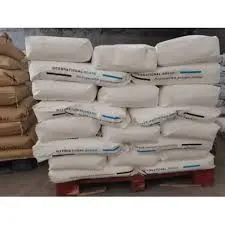
Th10 . 10, 2024 03:33 Back to list
hpmc for putty powder
Understanding HPMC for Putty Powder A Comprehensive Look
Hydroxypropyl Methylcellulose (HPMC) is a versatile cellulose ether that has gained prominence in various industries, including construction, pharmaceuticals, and food production. This article presents a detailed overview of HPMC, particularly its application in putty powder, highlighting its properties, benefits, and production considerations.
What is HPMC?
HPMC is a non-ionic, water-soluble polymer derived from cellulose, the structural component of the plant cell wall. Modified through chemical processes, HPMC possesses unique properties that make it an essential additive in many formulations. Its ability to form thickened solutions and gels, alongside its favorable thermal stability, is especially beneficial in the production of construction materials like putty powder.
The Role of HPMC in Putty Powder
Putty powder is an essential material in construction, primarily used for leveling walls and ceilings and providing a smooth surface for painting and finishing. The incorporation of HPMC into putty formulations enhances performance in several key ways
1. Water Retention One of HPMC’s most significant contributions is its excellent water retention capability. When added to putty powder, HPMC helps maintain moisture levels, allowing for longer working time on the surface before the material dries. This characteristic is particularly beneficial in hot or dry conditions, ensuring that the putty doesn’t harden too quickly.
2. Improved Workability HPMC improves the workability of putty powder, making it easier to apply and spread on surfaces. This enhancement is crucial for achieving a smooth finish, as it reduces resistance during application and allows for a more even distribution of the material.
3. Thickening and Stabilization HPMC acts as a thickening agent, which helps to stabilize the putty mixture. This means that the putty is less likely to separate or settle during storage, ensuring uniformity in the application. The stabilizing effect also contributes to the control of sagging and slipping when applied to vertical surfaces.
4. Adhesion Improvement Another advantage of HPMC is its ability to enhance the adhesion properties of putty powder. This ensures that the putty adheres firmly to various substrates, minimizing the risk of peeling or flaking over time. This characteristic is particularly beneficial when working with different wall materials, such as concrete, plaster, or drywall.
hpmc for putty powder

5. Reduced Dust Generation Dust is a common issue with many construction materials. HPMC helps reduce dust generation during mixing and application, contributing to a cleaner working environment. This feature not only enhances comfort for workers but also improves site safety by reducing airborne particles.
Choosing the Right HPMC for Putty Powder
When selecting HPMC for putty powder applications, several factors need to be considered
- Viscosity Grade The viscosity grade of HPMC affects the rheological properties of the putty. High-viscosity grades provide more thickening and stability, while lower viscosity grades may enhance workability without making the mix too thick.
- Methoxyl and Hydroxypropyl Content The ratio of methoxy and hydroxypropyl groups in HPMC affects its thermal gelation temperature and solubility. Customizing these ratios can tailor the properties of putty powder to specific application needs.
- Purity and Quality Standards High-purity HPMC is essential for ensuring optimal performance. Manufacturers should look for HPMC that meets the relevant industry standards and certifications.
Conclusion
Incorporating HPMC into putty powder formulations offers significant advantages that enhance the application, performance, and stability of this vital construction material. Its water retention, improved workability, adhesion, and thickening properties contribute to creating high-quality finishes that meet the demands of modern construction practices. As the building industry continually evolves, understanding the role of materials like HPMC will be crucial for innovation and sustainability, ensuring that construction practices remain efficient, effective, and environmentally friendly.
With the right formulation and selection of HPMC, manufacturers can produce putty powders that not only meet industry standards but also provide superior performance on job sites. As the demand for advanced construction materials increases, HPMC’s role is set to grow, making it an indispensable component in the future of construction.
-
The Widespread Application of Redispersible Powder in Construction and Building Materials
NewsMay.16,2025
-
The Widespread Application of Hpmc in the Detergent Industry
NewsMay.16,2025
-
The Main Applications of Hydroxyethyl Cellulose in Paints and Coatings
NewsMay.16,2025
-
Mortar Bonding Agent: the Key to Enhancing the Adhesion Between New and Old Mortar Layers and Between Mortar and Different Substrates
NewsMay.16,2025
-
HPMC: Application as a thickener and excipient
NewsMay.16,2025
-
Hec Cellulose Cellulose: Multi functional dispersants and high-efficiency thickeners
NewsMay.16,2025







